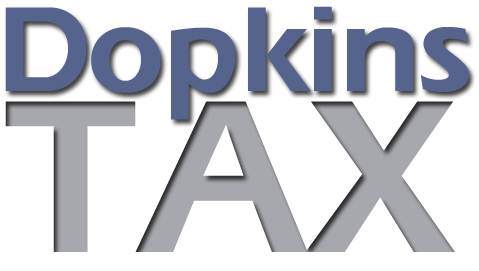2014 Year end tax planning tips
November 20, 2014 | Authored by Dopkins Tax Advisory Group

Individual Tax Planning
Fourth Quarter Estimated State Tax Payments
Taxpayers who itemize on their federal returns generally may deduct any state income taxes paid during 2014. Paying fourth quarter estimated state taxes (generally due in January) before the end of 2014 may reduce an individual’s federal tax bill. However, potential alternative minimum tax consequences should be considered.
Retirement Savings
Employees enrolled in retirement savings plans may save taxes by increasing their pretax contributions before the end of the year. For 2014, employees may contribute up to $17,500 to their 401(k), 403(b), or 457(b) plan. If the plan permits, employees 50 and older may make an additional contribution of up to $5,500. (Additional plan limits may apply.)
For 2014, eligible taxpayers may make deductible contributions to an individual retirement account (IRA) of up to $5,500. Individuals 50 and older may contribute an additional $1,000. Even if a spouse has no earnings, he or she may still make an IRA contribution. However, the other spouse must earn enough to cover both contributions. An IRA deduction may be limited if the taxpayer (or the taxpayer’s spouse) is an active participant in a retirement plan at work and adjusted gross income exceeds certain limits.
Required Minimum Distributions
Generally, individuals 70½ or older who have IRAs or retirement plan accounts must take their required minimum distributions (RMDs) before the end of the calendar year. Failure to do so may result in a 50% penalty on any required withdrawals not taken by that date.
Taxpayers who turn 70½ in 2014 may wait until April 1, 2015, to take their first RMD. However, a second RMD would also have to be taken in 2015 (by December 31) and, together, the two RMDs may substantially increase taxable income for 2015.
Higher Education Expense Credits
Those paying college-related expenses for their children will want to consider two potentially valuable tax credits: the American Opportunity Tax Credit (AOTC) and the Lifetime Learning Credit. Of the two, the AOTC is generally more beneficial for parents paying the undergraduate expenses of their children. This credit is worth up to $2,500 for eligible expenses of $4,000 or more (generally, tuition and fees, but not room and board).
Because the AOTC phases out for higher income taxpayers, it may be beneficial for the student to claim the credit on his or her own return. (Requirements apply.)
Also, taxpayers cannot “double dip” by claiming the AOTC for expenses paid with tax-free Section 529 college savings plan withdrawals. Those who have a 529 plan might want to pay some expenses out of pocket to preserve their right to use the credit.
3.8% NII Tax
Higher income taxpayers will have to pay an extra 3.8% surtax on the lesser of (1) net investment income (NII) or (2) the amount by which their modified adjusted gross income exceeds certain thresholds ($250,000 for joint filers or surviving spouses, $125,000 for those married and filing separately, and $200,000 for single and head-of-household filers). A number of strategies are available to help reduce NII, including transforming passive business activities into active business activities and deferring capital gains with installment sales.
Business Tax Planning
Expense Equipment Acquisitions
Owners who are planning a significant purchase for their business may want to do so before the end of the year. Section 179 of the tax code allows an immediate deduction of up to $25,000 for qualifying property placed in service by an active trade or business.
Qualifying property generally includes most depreciable property (other than buildings). In addition, the deduction limit is reduced dollar for dollar to the extent that the cost of qualifying property exceeds $200,000
Plan for Profits and Losses
C corporation owners who expect to earn a profit this year may want to consider reducing their tax bill by paying bonuses or making a tax-deductible profit sharing contribution.
Likewise, S corporation owners may want to calculate how much they can contribute to the company’s retirement plan. Additionally, owners of S corporations that anticipate a loss for the tax year need to calculate their available “basis” for claiming the loss.
Please contact your Dopkins Tax Advisor if you’d like to discuss your tax situation.
About the Author
Dopkins Tax Advisory Group
Our tax professionals include specialists who are proactive, strategic thinkers who work to maximize your cash flow. In addition to cash flow considerations, we also believe that tax planning is most effective when it is integrated with, and fully supports, your business plan and personal goals. Our approach to tax planning will help you better understand the tax implications of any proposed course of action, and together we can make the right decisions for your business. Contact us via email link below for more information. for more information contact your Dopkins Client Service Coordinator or Gregory Urban at gurban@dopkins.com

